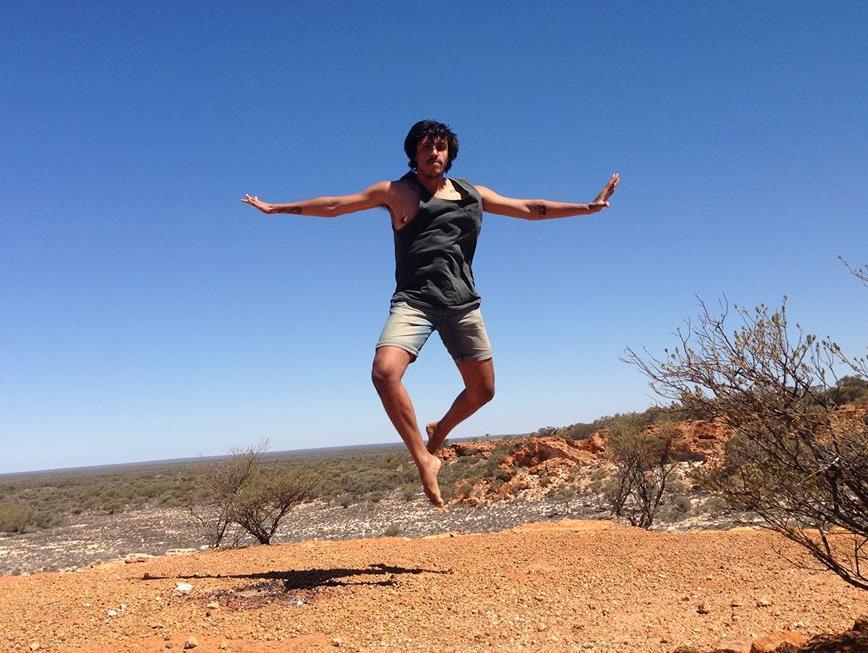Dancer Thomas ES Kelly is a 2014 Jump mentee
Yet again, Australia’s arts ecology is being over-stressed by government budget cuts. The Federal Opposition calculates that Australians will lose $100m of government investment across the arts if the May budget gets through Senate. In Queensland, the effects of displacing more than $12.4m of arts funding are being sorely felt, particularly in the provision of critical infrastructure for young people, youth arts, and early career artists. The quantity and quality of arts mentoring programs – which in some jurisdictions are the catalyst and mainstay of support for new work – is clearly going to suffer. So it is timely to reconsider the role of mentoring in the context of such dire industry change and rampant neoliberalism.
Mentoring programs so often trade under aspirational nomenclature like ‘spark’, ‘jump’, and ‘kickstart’. But what’s to get excited about when the value of artists’ careers and contribution to society is so explicitly, politically and publicly being undermined? When even higher education in the arts is threatening to turn exclusively to occupational training, forgoing deep investigation of the creativity, discipline, arts knowledge and skill required to explore and contest what it means to be fully human.
So I share a worry about the co-option of mentoring programs as a panacea for government neglect of the arts: that is, mentoring tethered to career advancement and success. Don’t get me wrong: I’m the last person to unwish a brilliant career on an artist. But in the context of our economy’s growth-fixation, where would we place the necessary opportunity for professional sharing of the heart, the risk and the guts of artistic endeavour that may otherwise become unavailable should mentoring programs become similarly fixated on artists’ market-readiness?
I don’t know the answer, or even if that’s the right question. But I do know these budgetary changes give pause for thought – to look mindfully at the lived experience of arts practitioners in the current industry environment. Rather than perceive mentoring as a leg-up to ill-defined success, I am curious to consider how mentoring might be re-visioned as a sustainable professional learning practice that nourishes individual artists and the broader ecology alike.
One way to think about this is to consider Australia’s arts industries as an ecology of intersecting communities of practice. Communities of practice, as described by learning theorist Etienne Wenger, are everywhere and we belong to many of them at once – within our professional lives, home lives, areas of interest and locality. They are rarely explicit or named, but we have a good idea of the ones we belong to and would like to belong to. In our professional contexts, we may feel central to some communities but may be peripheral to others.
When considering the implications of this for mentoring, the question changes from what does it take for a young or early career artist to achieve success, to how can this person be recognised and supported as both a learner and contributor to Australia’s arts ecology? What is needed for them to cultivate quality practice harnessed by relevant intersecting communities of practice that apportion value, meaning, purpose and identity to what they do?
A number of existing mentoring programs appear to be addressing this kind of question already in what they do. Think of the Australia Council’s Jump program. It connects early career artists with individual mentors, in addition to providing a platform for simultaneous ‘learning as doing’ as the artists’ work is presented at the Next Wave Festival. This cultivates further interactions with diverse communities of practice represented by the contemporary producers, managers and other creators involved. Think also of Arts Tasmania’s Artist in Residence initiative that matches artist-residents with individual artist mentors outside the school environment and, in addition, provides interactive ‘hub’ mentoring through professional learning events that give space for critical reflection with other educators, artists and artist-residents. While the heart of these programs (while they still remain government supported) is one-on-one mentor relationships, the context for these relationships is in the intersection of various communities of practice. Equal learner and contributor status is afforded to the mentored artist by the experience, promoting the sense that many people are critical to the individual’s professional growth and to the wider industries’ productive flourishing.
The success of Australia’s arts industries is charted in varied ways, not least of all in further growth fixations: contributions to international export, indexes of urban liveability, levels of employment and community vibrancy, and bums on seats. As unsystematised as that list may appear, it’s what we read and hear about most in the public domain. But we all know the tried and true adage that without significant input and influence from artists new to professional creative practice, the ecology is not a well-functioning system. Growth – however benchmarked – does not necessarily lead to flourishing.
So, rather than support mentoring as a jumpstart to individual success (my fear in this brave new world), my question is how might new-to-profession artists be embraced, affirmed, challenged and supported by diverse and intersecting communities of practice? Mindful attention to that question would go some way to ensuring that mentoring is both sustaining and sustainable as a learning principle and key responsibility of the vibrant and ever-evolving communities of practice that make up our Australian arts ecology. It’s reprehensible that our government dollar is unlikely to make that kind of investment much longer. But recognition of the importance of supporting new-to-profession artists as simultaneous learners and contributors is key to our ecological survival in very tough times.






